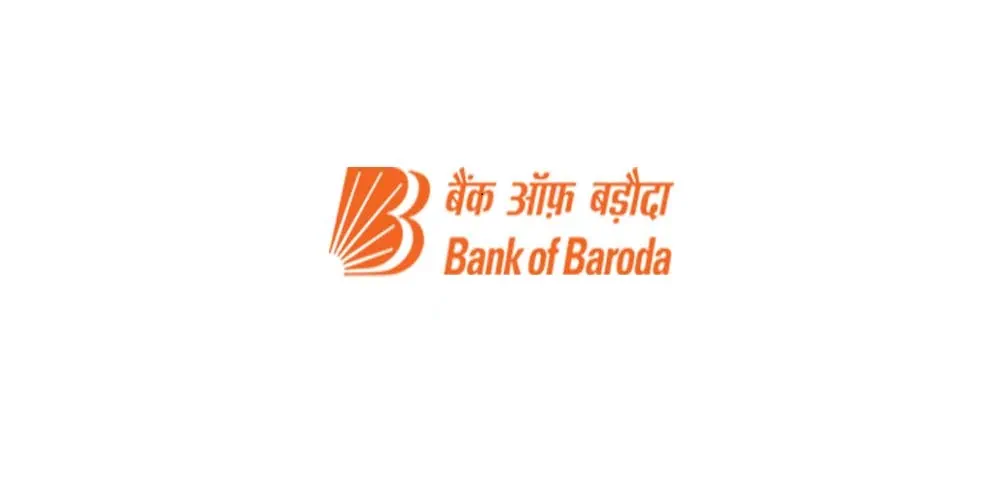
Complete Guide to Mutual Funds
06 Sep 2023

Table of Content
-
What is a Mutual Fund?
-
How do Mutual Funds Work?
-
Features & Benefits of Investing in Mutual Funds
-
Different Types of Mutual Funds in India
-
Eligibility to Invest in Mutual Funds in India
-
How to Invest in Mutual Funds?
-
How to Calculate Mutual Fund Returns?
-
Difference Between SIP and Mutual Fund
-
Monitoring and Managing Your Investments
-
Conclusion
-
FAQs – Complete Guide to Mutual Funds
What is a Mutual Fund?
Mutual funds, in essence, are the democratic soul of the investing world. They cater to the small retail investor looking to dip their toes into the vast ocean of equities, bonds, or other securities, and also to the seasoned player wanting to diversify their portfolio. Managed by professional money managers, these funds aggregate the investments from numerous individuals to buy a wide range of securities.
Buying a Mutual Fund is like buying a ticket to an amusement park where each ride (read, asset class) promises a unique thrill (read, returns). So, whether you are a thrill-seeking investor with a taste for high-risk-high-reward equity funds, or a conservative investor looking for the steady ride of debt funds, mutual funds have something for everyone.
How do Mutual Funds Work?
Mutual funds collect money from a group of investors and use this pool to buy a portfolio of stocks, bonds, or other securities. Each investor fund effectively owns a portion of this total pool.
Let's assume we have a mutual fund focused on tech stocks - let's call it the "Tech Titans Fund". The fund is managed by an Asset Management Company (AMC) that has a team of professional money managers. These professionals are experienced in market research and investment decision-making.
Suppose this fund has attracted investments from 1000 different individuals who have each invested INR 10,000. The total amount collected would then be INR 1,00,00,000. The fund manager, based on their research and market conditions, will use this money to buy shares of various tech companies like Infosys, TCS, Wipro, etc. This forms the fund's portfolio.
Now, suppose you're one of those 1000 investors. The INR 10,000 you invested will give you units of the fund. If the fund has a Net Asset Value (NAV) of INR 100 when you invest, you'll receive 100 units (INR 10,000 / INR 100). The NAV of the mutual fund, which is the value of one unit of the fund, is calculated by dividing the total value of all the securities in the portfolio by the total number of units issued to the investors.
So, you indirectly own a small fraction of all the stocks that the fund has in its portfolio. As the value of these stocks rises or falls, the NAV of the mutual fund will also change. If the fund does well and the NAV increases to INR 110, the value of your investment would rise to INR 11,000 (100 units * INR 110).
The fund manager continually monitors the market and adjusts the portfolio by buying and selling stocks to maximise returns. The objective is to earn a return on the money you and other investors put in, minus the costs of managing the fund (known as the expense ratio).
That's the essence of how a mutual fund works. It pools money from various investors, invests that in a diversified portfolio of securities managed by professionals, and aims to provide a return to the investors.
Features & Benefits of Investing in Mutual Funds
Features of Investing in Mutual Funds:
- Professional Management: Mutual funds are managed by professional fund managers who make investment decisions based on extensive market research.
- Diversification: Mutual funds invest in a wide range of securities, spreading out the risk. This ensures that the poor performance of a few securities doesn't significantly impact your entire investment.
- Liquidity: Mutual fund units can be bought or sold (redeemed) on any business day, providing high liquidity.
- Low Minimum Investment: Mutual funds typically have a low minimum investment requirement, making them accessible to small investors.
- Flexibility: They offer flexibility in terms of investment methods like lump-sum investment or Systematic Investment Plan (SIP), where you can invest a fixed amount at regular intervals.
- Choice of Funds: There are various types of mutual funds available, such as equity funds, debt funds, hybrid funds, sectoral funds, index funds, etc. Investors can choose funds based on their risk tolerance and investment goals.
Benefits of Investing in Mutual Funds:
- Potential for Higher Returns: Compared to traditional investment options, mutual funds have the potential to earn higher returns, especially over the long term.
- Convenience: Investing in mutual funds is easy and convenient. Units can be bought or sold online, and the process is user-friendly.
- Transparency: Mutual funds are highly regulated and offer transparency in operations. Investors receive regular updates about the performance of their investments.
- Suitable for Long-term Goals: Mutual funds are ideal for long-term financial goals, like retirement planning, buying a house, or funding higher education.
- Tax Benefits: Certain types of mutual funds like Equity Linked Savings Schemes (ELSS) offer tax benefits under Section 80C of the Income Tax Act in India.
- Automatic Reinvestment: Mutual funds offer the option of reinvesting the income generated, allowing your investment to grow through compounding.
Different Types of Mutual Funds in India
Each type of mutual fund has its own risk and reward parameters and is designed to cater to the varied investment goals and risk tolerance levels of investors.
- Equity Funds: These are funds that primarily invest in stocks of companies. Based on the size of the companies they invest in, they can be further divided into large-cap, mid-cap, and small-cap funds. Equity funds are considered to have a high risk-reward ratio and are more suited for long-term investment and for investors with a higher risk appetite.
- Debt Funds: Debt funds primarily invest in fixed-income securities such as corporate bonds, government bonds, treasury bills, and other money market instruments. They aim to provide stable returns and are suitable for investors with a lower risk appetite.
- Hybrid or Balanced Funds: These funds invest in a mix of equity and debt to balance the risk and returns. The allocation could vary - some may have a higher allocation to equity and others to debt. These are suitable for investors who prefer a balance between risk and return.
- Index Funds: These funds mimic the portfolio of a particular index such as the BSE Sensex or the Nifty 50. The performance of these funds is tied to the performance of the chosen index.
- Fund of Funds: These funds invest in other mutual funds. A Fund of Fund provides a way for investors to achieve greater diversification and spread out their risk.
- ELSS Funds (Equity Linked Saving Scheme): These funds provide tax benefits under Section 80C of the Income Tax Act in India. They have a lock-in period of three years and primarily invest in equity-oriented securities.
- Liquid Funds: These are a type of debt funds that invest in short-term market instruments like treasury bills and government securities. They are considered to be low-risk and are suitable for investors looking for short-term investment options.
Eligibility to Invest in Mutual Funds in India
- Age: The investor must be at least 18 years old. Investments for minors can be made through parents/legal guardians.
- Residency: Both residents and non-resident Indians (NRIs) can invest in mutual funds in India. Certain mutual funds also accept investments from Persons of Indian Origin (PIO) and Overseas Citizens of India (OCI).
- Bank Account: An investor should have an operational bank account in India. NRIs should have an NRE/NRO account.
- PAN Card: A valid PAN card is mandatory for investing in mutual funds in India. For NRIs, the PAN card should be linked with the overseas address.
- KYC Compliance: Know Your Customer (KYC) compliance is necessary. This includes verification of identity, address, and signature.
- Payment Options: Payment for the investment can be made through Indian bank accounts only. NRIs can invest through their NRO/NRE account.
How to Invest in Mutual Funds?
Investing in mutual funds is a straightforward process:
- Complete your KYC: Before investing, you need to be KYC-compliant. This involves submitting identity proof, address proof, PAN card, and a photograph.
- Choose the Right Fund: Choose a fund that aligns with your investment goals, risk appetite, and investment horizon. You can select from equity, debt, hybrid, sectoral, or thematic funds based on your requirements.
- Choose the Investment Mode: Decide if you want to invest a lump sum amount or opt for a Systematic Investment Plan (SIP). SIP allows you to invest a fixed amount at regular intervals.
- Invest through AMC or Distributor: You can directly invest through the Asset Management Company's website or through a mutual fund distributor. You can also invest through various fintech platforms that provide mutual fund investment services.
- Fill out the Application Form: You need to fill up an application form providing details like name, address, PAN number, the scheme in which you want to invest, the amount of investment, etc.
- Make the Payment: Finally, you need to make the payment through net banking, debit card, cheque, or demand draft as per your convenience.
How to Calculate Mutual Fund Returns?
The most common way to calculate mutual fund returns is through the use of the Compound Annual Growth Rate (CAGR) for investments held for more than one year.
Here is the formula:
CAGR = [(Ending Value / Beginning Value) ^ (1 / Number of Years)] - 1
For SIP investments, the method used is called the XIRR (Extended Internal Rate of Return) which takes into consideration the time and amount of each investment made.
Difference Between SIP and Mutual Fund
A Systematic Investment Plan (SIP) is not a type of mutual fund; it's a method of investing in mutual funds. While 'mutual fund' refers to the pool of funds collected from various investors and invested in diversified assets, SIP is a way to invest in these funds systematically. Instead of investing a lump sum amount at once, SIP allows you to invest a fixed amount at regular intervals (weekly, monthly, quarterly) in a particular mutual fund scheme. It's a disciplined approach to investing and also helps in averaging out the cost of investing due to rupee cost averaging.
Monitoring and Managing Your Investments
It's important to regularly analyse your mutual fund investments :
- Regular Reviews: Conduct periodic reviews of your mutual fund portfolio to assess the performance of your funds.
- Compare with Benchmark: Compare the performance of your funds with their respective benchmarks to see if they are meeting their investment objectives.
- Look at the Fund's Holdings: Keep an eye on the securities your fund is holding. Frequent changes may indicate instability.
- Check the Expense Ratio: A high expense ratio can eat into your returns. Be sure your funds aren't charging excessive fees.
- Changes in Your Risk Profile: Your risk profile may change over time based on changes in your income, age, and financial goals. Ensure your investments align with your current risk profile.
Also Check - Glossary of Mutual Fund Terms: You Must Know
Conclusion
In this investment journey, a reliable and robust platform is your best companion. That's where the Bank of Baroda comes into play. Known for its customer-centric approach and simplified investing experience, Bank of Baroda offers a comprehensive platform to invest in a wide array of mutual funds. It helps you make informed decisions, ensuring a smooth investment experience, whether you're a first-time investor or a seasoned one.
FAQs – Complete Guide to Mutual Funds
1. Can beginners invest in mutual funds?
Absolutely! Mutual funds are a great starting point for beginners due to their managed nature and diversification.
2. Is mutual fund safe?
While all investments carry some level of risk, mutual funds are considered relatively safer due to their diversified portfolios.
3. How much should I invest in mutual funds?
This depends on your financial goals, risk appetite, and investment timeline. Always ensure to diversify your investments.
4. Can I invest only Rs. 500 in a mutual fund?
Yes, many mutual funds allow investments starting from as low as Rs. 500.
5. How to check mutual fund status with a PAN number?
You can check the status of your mutual funds through the CAMS website or various mutual fund investment apps by using your PAN number.
6. When can I withdraw mutual funds?
Except for certain funds with lock-in periods, you can withdraw your mutual fund investment at any time.
7. What is the mutual fund minimum retaining period?
There isn't a set minimum retaining period for most mutual funds. However, funds like ELSS have a lock-in period of 3 years.
Popular Articles
-
Disclaimer
The contents of this article/infographic/picture/video are meant solely for information purposes and do not necessarily reflect the views of Bank of Baroda. The contents are generic in nature and for informational purposes only. It is not a substitute for specific advice in your own circumstances. Bank of Baroda and/ or its Affiliates and its subsidiaries make no representation as to the accuracy; completeness or reliability of any information contained herein or otherwise provided and hereby disclaim any liability with regard to the same. The information is subject to updation, completion, revision, verification and amendment and the same may change materially. The information is not intended for distribution or use by any person in any jurisdiction where such distribution or use would be contrary to law or regulation or would subject Bank of Baroda or its affiliates to any licensing or registration requirements. Bank of Baroda shall not be responsible for any direct/indirect loss or liability incurred by the reader for taking any financial decisions based on the contents and information mentioned. Please consult your financial advisor before making any financial decision.






